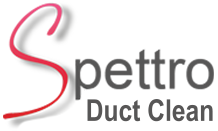Spettro Duct Clean – FAQ’s
Answers to your frequently asked questions.
1. Why do kitchen extraction ductwork systems need cleaning?
Kitchen extract/ductwork systems become coated in combustible materials such as fats, grease and grime that are given off during the cooking process.
If these are not regularly removed through cleaning, then the risk of a fire increases as the dirt builds up
Your insurance company will require you to show that you are managing this risk and that the extract system is cleaned by a reputable company.
2. How often should I clean my commercial kitchen ductwork system?
The frequency with which you should have your kitchen extract system cleaned depends on how heavily it is used. There are B&ES TR19 Standard best practice guidelines (see below). In practice, the AIB (Association of British Insurers) recommends that, depending on the usage load, an extract system in a commercial kitchen should be cleaned and certified anything from quarterly to annually
The HVCA’s TR/19 best practice guidance calls for regular specialist cleaning of Extract Systems based on usage. Section 7.35 shows the minimum recommended interval between specialist cleans to be as below;
Frequency of Cleaning
Heavy Use 12 – 16 hours per day – 3 monthly
Medium Use 6 – 12 hours per day – 6 monthly
Light Use 2 – 6 hours per day – 12 monthly
If unattended to, the consequences can be severe for not only the commercial operation but the individual responsible.
Beyond that there are the environmental and mechanical issues that can arise as a result of neglect or incomplete cleaning.
3. How do you go about cleaning a kitchen ductwork system?
First it is important to determine whether the canopy surface is made from stainless steel or aluminium in order to apply the correct cleaning method and chemicals. A simple test with a magnet will confirm which material we are dealing with.
The grease filters and any external louvres and cowling are removed for appropriate cleaning.
Next the inside of the canopy and the duct is inspected, and where there is excess grease, this may need to be scraped away before starting chemical cleaning. In addition, if the duct is inaccessible, then it may be necessary to cut out access panels. If this is required it will have been agreed with the client prior to work commencing.
Where applicable, the fan is removed and dismantled for cleaning. Once removed, the fan is thoroughly degreased, rinsed and dried.
Now the inside of the canopy and duct can be sprayed with the appropriate chemicals and left to work according to manufacturers’ specifications. The entire canopy structure is degreased, and the surrounding back panels, walls and ceiling areas are also thoroughly cleaned.
These surfaces are now cleaned off with a steam vacuum (where possible) or alternatively a steam cleaner, scraper or cloth are used where access is more restricted areas.
Drip trays and lips are also thoroughly cleaned.
The fan unit is re-assembed and tested.
Grease filters are removed and steam cleaned after being soaked in chemicals
The outside of the canopy is cleaned.
Finally, all floors used for access, both inside and outside of the premises are cleaned.
4. How do you perform a Kitchen Deep Clean?
To achieve a successful kitchen deep clean, it is important to go about the process in a logical and systematic way.
Firstly, the various appliances need to be dismantled so that their components can be assembled for immersion in a soaking chemical before steam cleaning, Components that can be removed for dipping include; grease filters, oven trays, range tops and rings, fryer pans, grill trays, dismantled fan units as well as other heavily soiled items.
The components are immersed in the chemical and timed according to the manufacturers’ guidelines.
Prior to cleaning the kitchen itself, all electrical items are isolated and exposed switches covered.
Some kitchen items will be best cleaned in an outside area. These are assembled and removed from the kitchen.
Where possible, equipment is pulled out to ensure that thorough cleaning can be achieved both beneath and behind the equipment.
The inside areas to be cleaned are now scraped of all excess grease using wire brushes or scrapers, prior to steam cleaning chemicals are only used if necessary. Once cleaned, all excess dirt and cleaning chemicals are cleaned off all surfaces.
Walls and ceilings are normally steam cleaned with a steam vacuum appliance, before the removed equipment is returned into position.
Floor areas are then thoroughly cleaned with use of a steam cleaner and wet vacuum.
Finally, the premises are tidied up – all rubbish and debris is removed, outside areas tidied up. The client will then inspect the work and once satisfied sign a customer satisfaction sheet.
5. Will the Certificate I get comply with all my insurance demands
We give our certificate that your Extract/Ductwork has been cleaned to the B&ES TR19 Standard that will comply with all demands made by insurance companies. If an insurance company can void the claim they will, so you have to be sure to read all the small print, or ask for clarification in writing that the TR19 specification is approved.
I do not know of any insurance company who do not accept this standard of cleaning – BUT REMEMBER DOCUMENTATION IS PROOF – so ask for it in writing.
